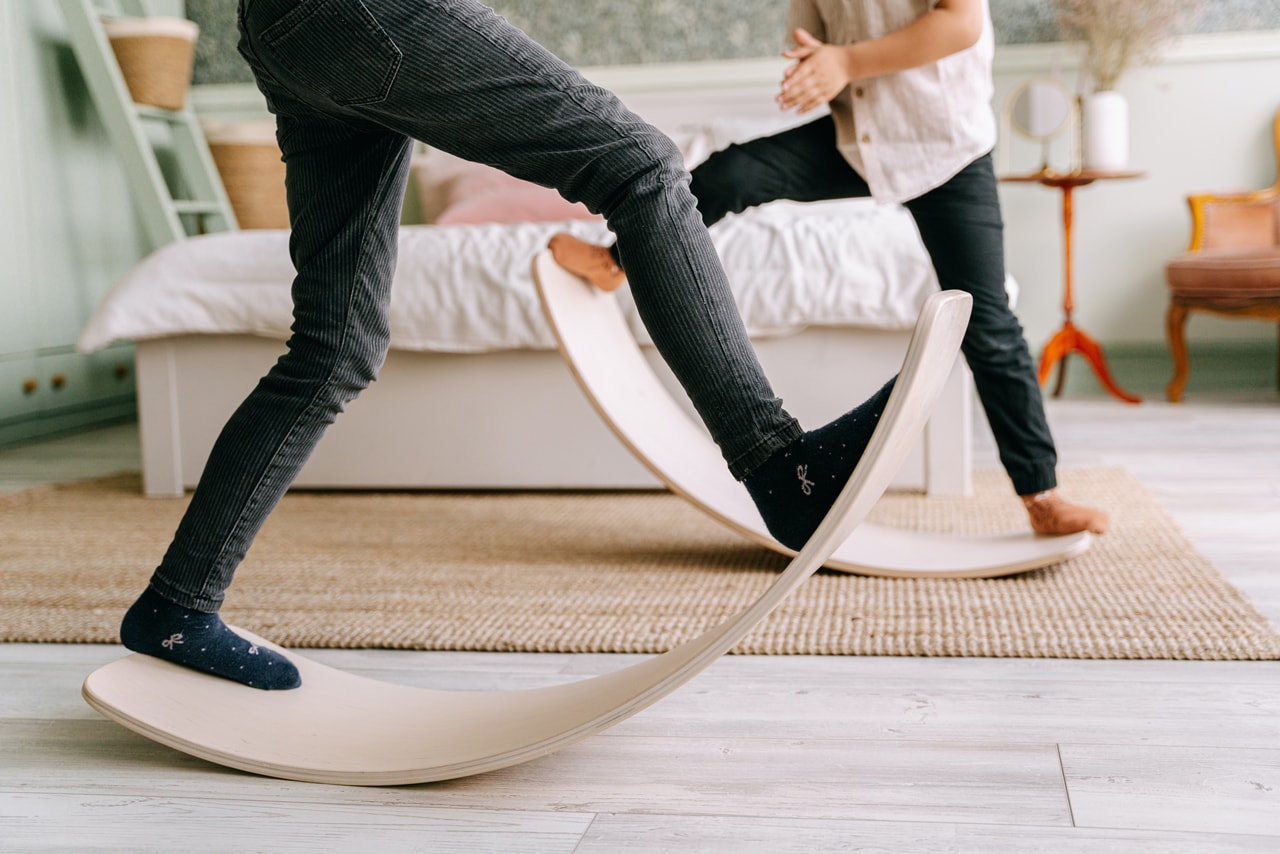Standing vs. Sitting
I talk to lots of people about their office setups, but one recent conversation still haunts me. A few months ago, I was chatting with Anette, a very earnest 30-something woman who volunteered, “I try to stand up at my standing desk for a few hours every day, but I just can’t; I’m just so uncomfortable.” It felt like an admission of defeat, almost like a confession. She simply wasn’t able to endure what she believed was required. And it seemed so unfair. Why should this woman’s desk not only make her uncomfortable, but feel like a failure as well?
And actually, the facts are on Anette’s side because standing still isn’t a natural posture for us humans. It’s actually a stress posture, forbidden even as an enhanced interrogation posture1. Further, there’s no scientific evidence that standing desks provide any health benefit: as a New York Times headline observed: “Standing Desks are overrated: They’re not cures for anything, and standing is not exercise.”2 Yes, sitting is a health risk, but standing actually turns out to be an even greater health risk. In a recent study published in the prestigious American Journal of Epidemiology3 Smith and coworkers found that the risk of heart disease is twice as high for those who stand most of the day compared to those who sit.
How did we arrive at this point, where a person is literally torturing themselves in a failed pursuit of better health and greater productivity.”
In a word, marketing.
The ergonomic office furniture/industrial complex requires a constant stream of reasons to buy new furniture. As research began to document just how unhealthful passively sitting for 8 hours a day was, standing desks provided just the needed marketing opportunity, and now a 10-billion-dollar market for standing desks has sprung up without any scientific justification.
And of course, “new” isn’t an accurate description of standing desks; standing desks seem to actually predate sitting desks. Standing desks have been in use since at least the fifth century4 when they were the preferred furniture in copying rooms, or “scriptorium”, of monasteries and have never really gone out of style: Thomas Jefferson, Mark Twain, and Winston Churchill all used standing desks.
No, what’s new is the marketing push.
But do standing desks really bring anything to the party? It turns out, not much. Most people at a standing desk lock their knees and slide a hip forward to adopt a locked-out posture that pretty much turns off most of their postural muscles, just like their “ergonomically” seated coworkers. So, at the muscular level, standing isn’t very different from sitting, which explains why there’s almost no increase in the metabolic rate when moving from a sitting desk to a standing desk5.
Predictably, the immobility induced by standing desks has provided further scope for selling any number of add-ons and workarounds, including standing desks paired with treadmills and standing desks paired with balance boards, all in hopes of injecting more muscular activity into standing at a standing desk at work. Unfortunately, while metabolic rate does increase when walking on a treadmill desk, one’s ability to actually work is compromised: typing errors increase, mousing accuracy decreases, and most problematic of all, treadmill walking worsened the Rey Auditory Verbal Learning Test for total learning6. Seemingly treadmill desks make us dumber.
The success of the standing desk juggernaut despite its shortcomings might seem puzzling, but speaks to the deep dissatisfaction with available options for working at a computer all day long. And the known problems with passive sitting turn out to be just the nugget of truth that is required for a brilliant marketing campaign: “Sitting is bad for you, so you need a standing desk”. Begin with a nugget of truth “Sitting is bad for you” and then move on to a convenient, but entirely unjustified conclusion “… so you need a standing desk.”
Of course, standing desks may be just the workplace solution for some people, and standing desks certainly can be incorporated into a routine that includes a variety of postures while working. Additionally, the flexibility that adjustable height desks allow is crucial to creating a work environment that fits one’s personal leg length and torso length; after all, we’re all different sizes, so it makes no sense to insist that we all sit at the same sized desk.
But the hope that standing desks are the workplace solution for everyone just doesn’t fit with the facts.
Just ask Anette.
1Torture and Democracy, Darius ReJali, 2007
2Are You Sitting Down? Standing Desks Are Overrated
4How medieval monks helped shape the modern-day office
6A systematic review of standing and treadmill desks in the workplace





Leave a comment
All comments are moderated before being published.
This site is protected by hCaptcha and the hCaptcha Privacy Policy and Terms of Service apply.